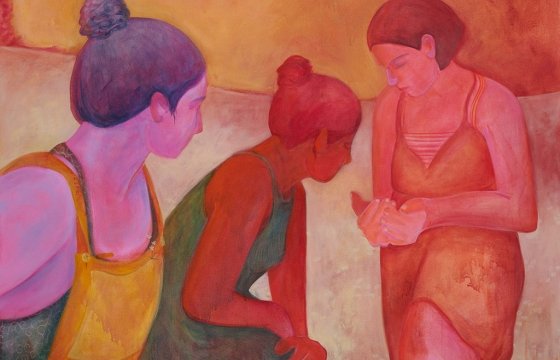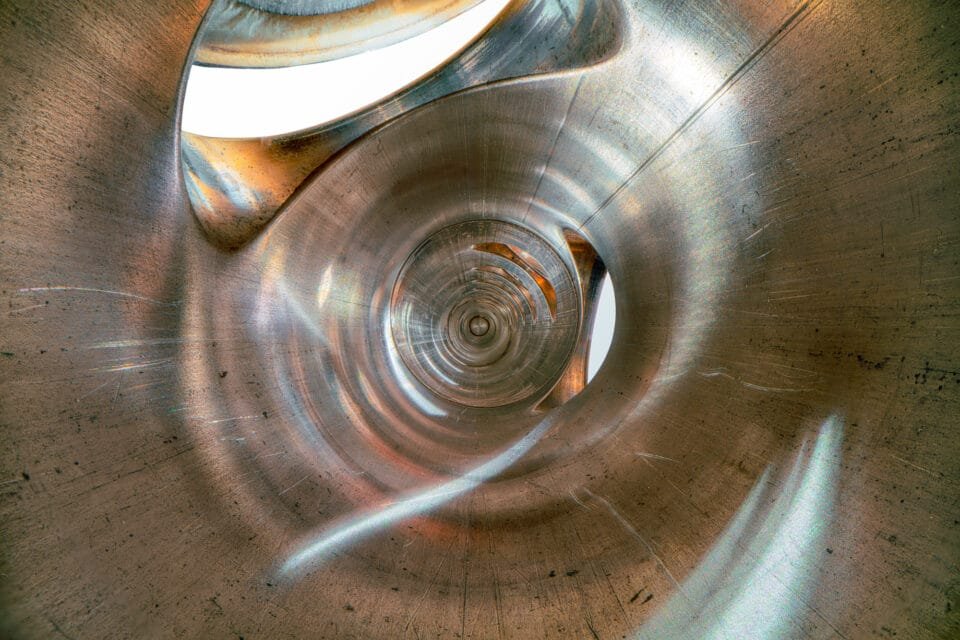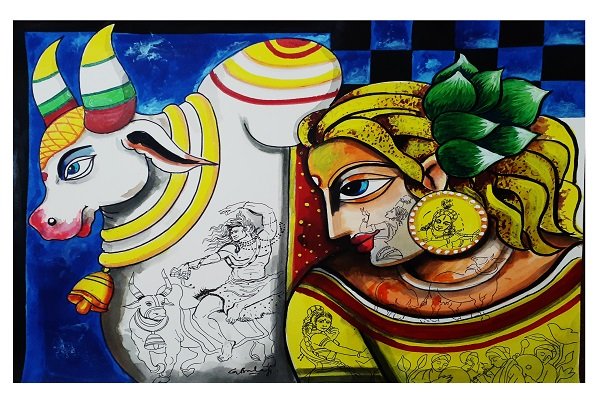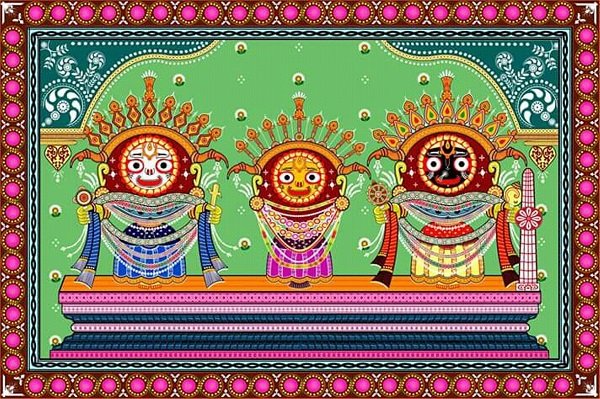Ivana Ivković (b. 1979 in Belgrade) observes that in moments of upheaval, art watches and waits. The Serbian artist works in the space between vulnerability and resistance, and she has taken to the streets. Her multidisciplinary practice traverses drawing, photography, installation, and delegated performance, and Ivković often uses the male body to examine power, trust, foreshadowing, and collapse. She notes, in this way, that her work transcends time.
Growing up in Belgrade during the 1990s anti-war protests, Ivković continues to join students and citizens in what she calls “a true political avant-garde” against corruption. For the artist, these demonstrations are living works of art, composed of bodies in motion, of people coming together in a choreography of resistance. Her upcoming projects exude this same urgency. The Arena, the culmination of her “Monument of Trust” series, will appear at the Belgrade Fair, while Ivković’s exhibition COM/PASSION will premiere at the Faculty of Fine Arts in Belgrade, where she serves as the institution’s 2025 alumni artist. For the artist, artmaking is not a form of documentation but a vector of anticipation that registers and predicts the future.
Drawing lies at the center of Ivković’s work, a method she describes as thinking, feeling, and moving through the world. With influences ranging from Pier Paolo Pasolini and David Lynch to Louise Bourgeois’s Destruction of the Father, which she carries with her like a bible, her practice is inherently queer. That is, the artist’s work doesn’t offer conclusions but creates spaces where power dynamics can be seen, felt, and questioned in real time. As patriarchal structures symbolically fall, Ivković’s delegated performances become monuments to that collapse, not to mourn, but to invoke something new entirely.
Charles Moore: Your work traverses drawing, performance, photography, and installation—often blending intimate, emotional, and political dimensions. How would you introduce yourself and your practice to someone encountering your work for the first time?
Ivana Ivković: Operating at the intersection of personal experience and societal constructs, my work explores trust, post-patriarchy, and power dynamics—primarily through delegated performance, often using the male body as a performative tool. I am drawn to the tension between vulnerability and resistance, intimacy and control. The body, both individual and collective, becomes a site of inquiry—a vessel of history, desire, and conflict. My performances, drawings, and installations do not offer fixed answers but create spaces where meaning remains fluid, shaped by the gaze and participation of others. Delegated performance, in particular, allows me to examine shifting agency and the dual nature of bodies as both symbols and realities. By subverting expectations, I seek to unsettle and provoke a confrontation with what is taken for granted.
I have been thinking intensely about the role of art—whether it can truly respond to the world we live in now. Does it hold any potential for change? And then I look back at my own work and realize how much it has foreshadowed what is happening today. Art’s power lies in its ability to anticipate, to pierce through time and glimpse the future. That thought comforts me, restoring art’s sense of purpose.
A few months ago, I was invited by the Faculty of Fine Arts in Belgrade, where I studied and earned my doctorate, to be this year’s alumni artist Honored, I proposed an exhibition on resistance within the institution, questioning compassion and solidarity as essential values that must be reexamined. I was also drawn to the former Akademija Club—once an iconic alternative venue, now rarely open for art. I envisioned a performance: a frozen club scene, a mosh pit charged with revolutionary energy. I wanted to return to the idea that, deep within the faculty, this club once stood as a true space of resistance and freedom. Twenty days later, students occupied the university in response to a national crisis. After a station roof collapsed in Novi Sad—a huge tragedy caused by corruption—public outrage erupted. In a country strangled by dictatorship, students took the lead, demanding accountability, a return to fundamental institutional values, and sounding the alarm for a society in deep crisis. In a bold and urgent act, students sent a letter to universities worldwide, declaring: Everyone has a reason to blockade their university these days; the world we live in and representative democracy itself are in profound crisis. It was not just a call to action but a fearless statement that the time for complacency had passed. And that keeps me at peace, knowing I caught the moment precisely. In times of upheaval, perhaps art waits and observes. Right now, I have nothing more to say—everything I stand for, I am demonstrating in the streets. The artistic response will come in time—after all, art always looks ahead.
You were born in Belgrade, a city with a charged history and a vibrant cultural scene. How has that shaped your artistic voice and the way you approach themes of power, desire, and human fragility?
Growing up in Belgrade in the 1990s, I was immersed in anti-war and political protests—streets became arenas of resistance, demands for change, and the desire to rewrite our futures. Today, I find myself back on those streets, actively engaged once again. The protests against corruption in Serbia, led by a powerful student blockade that I already mentioned, has expanded to include workers and citizens, have become a true political avant-garde. They challenge power structures, reshape the political landscape, and reimagine collective action. Being part of them feels like witnessing, in real time, the very ideas I have explored in my artistic practice coming to life.
My work has always explored power, desire, and human fragility, with the streets as a constant reference point. Performance allows direct engagement with these tensions—a space for both vulnerability and strength, individual presence and collective movement. Delegated performances have long examined collective bodies as sites of power, identity, unity, and compassion. But now, the streets are no longer just a place of inspiration; they are where I stand, fully present in a living, collective experience. The values I once conceptualized are unfolding before me. Balancing personal and collective movement—moderation in life—has always guided my practice. Right now, the streets are redefining those principles. These protests are not just political acts; they are living works of art—bodies in motion, a choreography of resistance, urgency, and hope.
Your influences span cinema, literature, and underground culture. Can you pinpoint a few pivotal works—whether films, books, or artists—that have significantly shaped your vision?
Listing names has never been my thing; I see it as an unfair selection, since countless authors have shaped my way of thinking and seeing the world. Any selection is merely a reflection of a temporary state of mind. But…two filmmakers I consider fundamental, both philosophically and aesthetically, are Pier Paolo Pasolini and David Lynch. In different ways, their work embodies radical vision and poetic resistance, and I hold them in the highest regard. Louise Bourgeois remains a constant inspiration; Destruction of the Father, Reconstruction of the Father is something I carry like a bible. Her lifelong return to the same questions proves that true artistic inquiry is never static. Philosophy—especially contemporary thought in gender and cultural studies—has been essential in shaping my perspective. While naming influences always feels like an arbitrary act of selection, I mention Hannah Arendt out of deep respect rather than as a singular reference. The same dilemma applies to literature—so much has left an imprint that any list feels insufficient. Certain names surface instinctively right now like Marcel Proust, Constantine Cavafy, Daniil Kharms, Danilo Kiš… Music, beyond language, shapes rhythm, atmosphere, and emotion in ways words cannot capture. And finally, years of psychoanalysis have imprinted both my life and work, reinforcing my belief that art, like the mind, is a negotiation between the known and unknown—a space where meaning is never fixed but continuously unfolding.

Your drawings often feel like they exist in a liminal space between the tangible and the ephemeral, the controlled and the spontaneous. Can you walk us through your approach to drawing—what compels you toward this medium, and how do you balance precision with instinct?
Drawing has always been the foundation of my practice—a way of thinking, feeling, and navigating the world. It merges intuition and structure, precision and instinct. Over time, I’ve pushed its limits, expanding into performance, photography, installations, and textiles. It’s where introspection meets broader social and political landscapes, where images, text, and symbols slowly take shape through constant movement across places and histories.
I often feel that drawing anticipates the future. Almost every place I’ve visited, I had already drawn before arriving. Some moments were so precise they left me stunned—like the night in a Moroccan fortress when a sudden windstorm brought a swarm of scorpions, exactly as I had drawn ten years earlier. The colors, the metal-framed bed, the shifting light—everything was the same. Panic! I had been obsessing over scorpions since my first time in the desert, expecting them to appear. And then they did. Or the time I canceled a flight from Toronto due to an inexplicable unease, only to later recall a drawing I had titled Canada Superstition Disaster—a warning from my past self to trust my intuition.
In many ways, my performance work now feels like an extension of those early drawings. A drawing I made at the end of art school—and a relationship—No More Pera (my ex’s name was Petar) somehow foreshadowed the entire Monuments series. Everything I once put on paper has either happened or found its way into my work in another form. Whether it’s intuition, subconscious mapping, or something stranger, drawing has always been my way of glimpsing what’s ahead—an act of creation that extends beyond the page and into life itself.
Your work has an undeniable sense of atmosphere—often cinematic, almost noir-like in its interplay of shadows and stark contrasts. Do you see your pieces as stills from a larger narrative, and do you consciously build an overarching storyline across your series?
Narrative is central to my work, but it does not unfold linearly. It emerges in layers and fragments that accumulate over time. The interplay of shadow and contrast, that noir-like sensibility you mention, is deeply tied to my fascination with film and the authors I have referenced. Film and photography shape my practice more than any other medium. Yet, the still image in my work is never entirely still, it holds the tension of something that has just happened or is about to happen, moments extracted from a story unfolding across multiple forms. Text is as integral as the body. The body itself is a message, holding history, trauma, desire – something to be read, interpreted, rewritten. This is why my work translates so naturally into the format of a book. An internal narrative runs through everything I do, sometimes surfacing clearly, sometimes reemerging in unexpected ways. The story is always there, unfolding, waiting to be deciphered.
You’ve explored performance as a means of engagement, notably in your project IN HIM WE TRUST (2016-2020) and MONUMENTS (2021- ongoing) where you intervened in urban spaces. What draws you to performance as a medium, and how does it differ from your experience with static visual work?
Performance, for me, is immediacy and risk. It unfolds in real-time, demanding presence – not just from the performers, but from the audience as well. Unlike static visual work, which allows for contemplation at a distance, performance collapses that space. It is a charged, collective event that resists repetition and documentation; it exists fully only in the moment of its happening. In IN HIM WE TRUST and MONUMENTS, working in urban spaces meant confronting history, power, and presence in real-time. The body is not just a medium but a site of negotiation—exposed, vulnerable, unfiltered. Unlike an artwork that remains in place, waiting to be viewed, performance forces an encounter. The city itself responds—people stop, react, intervene. It’s a dialogue, not a statement. What draws me to performance is its refusal to be fixed. It cannot be owned, revisited in the same way, or fully captured. It is not an object but an event, an act of disappearance as much as an act of presence. That tension, between the ephemeral and the visceral, between what is seen and what is felt, is what makes it irreplaceable.

Your work frequently explores themes of power and control, particularly in relation to gender and desire. Do you see your art as a critique, an exploration, or something more personal—perhaps an unfolding dialogue?
Power and control are not abstract—they are lived realities, shifting through history, context, and bodies. My work doesn’t offer conclusions but creates spaces where these forces can be seen, felt, and questioned in real time.
In delegated performances like TRUST, MONUMENTS, and IN HIM WE TRUST, I confront the collapse of systems that shaped our reality—patriarchy, capitalism, the illusion of stable identity. These structures have symbolically fallen, yet their remnants still govern us. My work is not just a critique but a monument to that collapse—not in mourning, but as an invocation of something new. Monument: No One is Lost is not a lament but a declaration: when oppressive power crumbles, everyone has the chance to find their own way. Art has the right to imagine new (collective) values, no matter how utopian they may seem.
Over time, my focus has shifted from deeply personal themes to an urgent engagement with social realities. Delegated performance creates a simulacrum of reality, where the perversion of performance collides with the perversion we live in. It holds up a mirror—exposing economic forces and power dynamics, not just staging reality but deconstructing it. My exploration of masculinity was a way to locate power’s fractures and reclaim it—on my own terms. I don’t inherit power; I expose its instability. My practice is inherently queer, not just in its engagement with gender transitions, but in its insistence that transformation is the fundamental state of existence. Identity is not fixed; survival depends on fluidity and openness, beyond dogmas that seek to constrain us. Performance is a rupture—a break from inherited structures and an opening toward something beyond control, yet collectively imagined.
The male gaze has historically dominated representations of the body, but your work subverts and challenges it in compelling ways. How do you navigate the power dynamics of looking and being looked at in your compositions?
The act of looking is never neutral. It is a form of power, a way of defining who holds ground and who is left exposed. The male gaze has long positioned women as passive objects, their image existing solely for male pleasure. But my work is not about reversing this dynamic—it is about dismantling the entire mechanism of the gaze and reclaiming what was never meant to be given away.
In delegated performances, I invert its logic: men are placed on display, but they are not passively consumed. Their bodies exist in a state of uncertainty, caught between monumentality and collapse, between vulnerability and strength. The performance becomes a mirror, not just reflecting history but revealing how its weight still shapes our present. At first, they stand exposed, held in the audience’s gaze. But something shifts. They regroup, reorganize, and return the look. Suddenly, the audience is the one laid bare. Shame moves from one side to the other, exposing not just what we do to each other, but how we endure.
This is where Julia Kristeva’s ideas become crucial. In Strangers to Ourselves, she describes the foreigner as someone who “dwells within us,” a reminder that otherness is not merely external but something we carry inside. The gaze is not only about gender; it is about visibility, about power’s shifting fault lines, about who is seen and who is rendered unseen, about who belongs and who remains an outsider.
Performing in different cultural contexts—Berlin, Athens, Novi Sad, Porto—I witness how the same bodily gestures are read in radically different ways. A stance that suggests defiance in one setting may signal surrender in another. The collective body and the audience exist in constant tension, shaped by the histories embedded in each location. And yet, across all these contexts, one thing remains true: looking is fragile, complex. It is never just an act of dominance. It can be an opening, a negotiation, even an act of care.
Queerness in my work is not just identity—it is method. It unsettles power, dissolves hierarchies. Performance turns the male gaze into confrontation and transformation. Figures society keeps apart—football fans, trans men, workers, elites—stand side by side, exposed to the same gaze. This is not about erasing difference but revealing unexpected solidarities. Power shifts. Identity evolves. Contradiction is not weakness but the spark of new ways of seeing—and being seen.
You’ve created series that incorporate fragmented or obscured figures, sometimes removing identity markers altogether. What does abstraction allow you to express that realism might not?
Abstraction unsettles perception. Stripping away identity markers doesn’t erase the body – it frees it from fixed definitions. Fragmentation and obscuring aren’t acts of concealment but ways of revealing what resists immediate comprehension. Collage has always drawn me, both in drawing and performance, because it allows seemingly incompatible elements to coexist. A body in pieces is not a body undone – it is a body in transition, negotiating its own meaning. Art is not a passport with stamped data; it is a space where identity slips beyond labels, into something fluid, unresolved, and alive.
Your work has traveled across Europe, Asia, and North America, and now you are engaging with dsbooks in Morocco and the U.S. How does place influence your work? Do you find yourself adapting your approach based on cultural or political contexts?
I love to drive! Traveling, observing, absorbing—sometimes I struggle with the last one, taking in too much and not leaving enough time to digest it all. 🙂 Movement isn’t just a way of life; it’s the core of my work. It doesn’t exist in isolation but responds to the tensions, rhythms, and unspoken rules of each place. Whether through delegated performance, drawing, or installation, I engage with space as a living entity, where histories intersect and new meanings emerge. Morocco pulls me toward its thresholds—where past and future blur, where the traveler and the local intertwine. The U.S. vibrates with a different tension, a place of fragmentation, where myths of self-reliance clash with the longing for collective narratives. My work is a map of movement, not just through geography, but through systems of power, memory, and trust.

Facing Morocco was the first in your ongoing Facing series with ds books, and now you are working on Facing California & Arizona. What sparked this project, and what connections or contrasts have you found between these regions?
Facing is a series created in collaboration with dsbooks from Basel, with Dragana Radivojević as the editor and me providing the material from my travels. These books are not just travelogues; they are curated cinematic experiences shaped by Dragana’s editorial vision and my artistic documentation—photographs, notes, poems, diaries. Despite knowing me so well, she still takes the time to decipher my journeys, crafting each book like a film that doesn’t just reconstruct my travels but reveals art as an essential survival tool. Facing is about the intersection of art and travel, about how moving through the world changes us, often in ways we don’t expect.
Facing Morocco was my personal The Sheltering Sky, only to realize that the romance of desert life, much like the tea itself, is not always as sweet as imagined. Deep in the dunes, in an artist residency far from everything familiar, I had to confront my anxieties—fears that had nothing to do with the vast, empty landscapes and everything to do with the unknown. Meanwhile, Facing California & Arizona is a lockdown fever dream—a Hollywood film I never meant to star in. What was supposed to be a brief visit turned into five months of be careful what you wish for, stranded in a place of cinematic illusions and personal disillusionment. Love, of course, played a role—a storyline that, like many Hollywood productions, didn’t quite have the ending I expected. If Morocco was a lesson in solitude and California a crash course in illusion, then Facing is the thread that weaves them together. These books are visual-poetic essays, films in book form, where travel is not just movement through space but a confrontation with the self. Because in the end, the places we visit change us, and what we create from them is what truly matters.
Looking ahead, what are you most excited about in your practice? Any upcoming projects or experiments that feel like a new challenge for you?
Looking ahead, I’m most excited about The Arena, the culmination of The Monument of Trust project, set to take place at the Belgrade Fair—an iconic modernist structure now under threat from neoliberal urban expansion and corruption-driven demolitions. While citizens actively resist these shadowy, anti-urban erasures of cultural and architectural heritage, the shifting societal landscape gives us hope that this final act of The Monument of Trust will unfold in a new spirit. This performance will channel the tensions between power, resistance, and collective agency, exposing the ways corruption seeps into both physical and social structures.
At the same time, I’m honored to be this year’s alumni artist at the Faculty of Fine Arts in Belgrade, where I am working on the exhibition COM/PASSION. This project stems from the belief that art is not merely a document of its time but an affective vector of anticipation—it does not simply represent but registers, articulates, and even predicts the imminent. Rather than reconstructing the past, COM/PASSION creates a productive tension between archival traces and contemporary urgencies, exploring art as a form of epistemological speculation.
Both The Arena and COM/PASSION speak to the urgency of connection, collective awareness, and trust in art as a transformative force. And that’s why I’m truly happy to see solidarity alive again on our streets—these days more than ever.














Leave a Reply